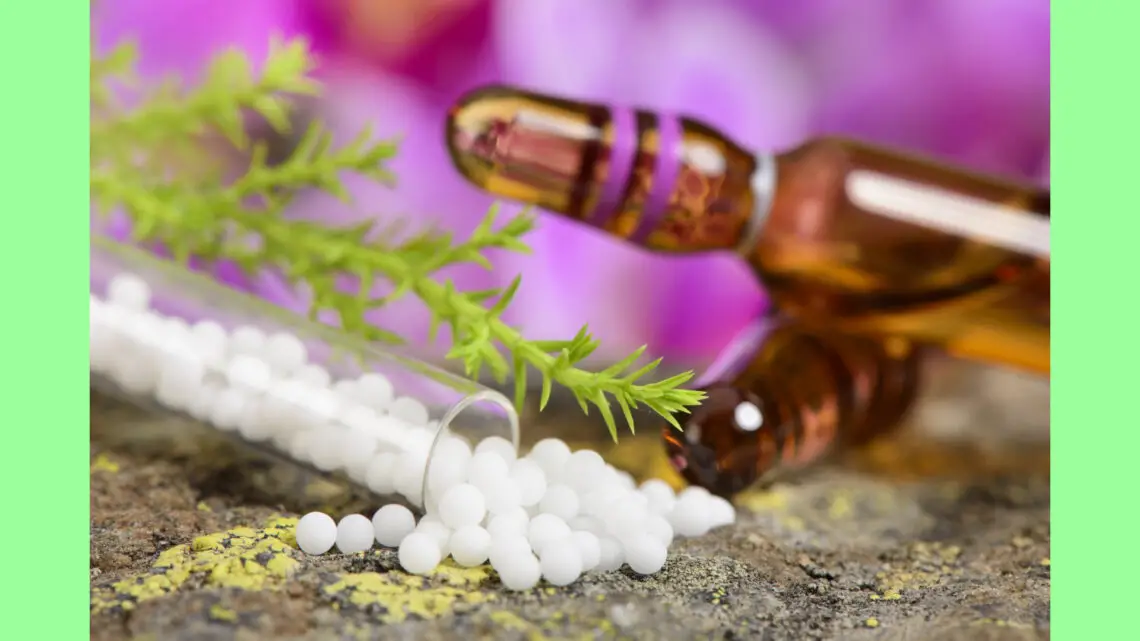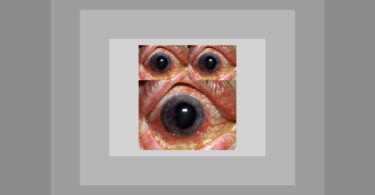“Imagine there’s no countriesIt isn’t hard to doNothing to kill or die forAnd no religion tooImagine all the peopleLiving life in peace”– John Lennon
I approach the topic of the religious influence on homeopathy with trepidation. It is such a huge topic and in this article I will only scratch the surface. I will argue that for the homeopathic practitioner a religious approach to life is invaluable; however it is not essential to be a Christian or follow any religion to do homeopathy; and that Tibetan Buddhist philosophy has something to offer the homeopathic prescriber.
Some time ago I attended a homeopathic seminar given by Anna Schadde. Schadde intertwined her presentation of cases with her own philosophy of life, which, if I remember correctly, incorporated a belief in re-incarnation. I remember during the lunch hour that I reassured a worried student who did not agree with Schadde’s philosophy, “You do not have to be religious to be a homeopath. Homeopathy is secular.”
Not all homeopaths would agree. Hahnemann, a freemason and a Christian, wrote:
“For truth is of the same eternal origin with the all-wise benevolent deity.” [1]
Dr. J.T. Kent was a Swedenborgian Christian who wrote,
“You cannot divorce medicine and theology. Man exists all the way down from his innermost spiritual to his outermost natural.” [2]
Professor E.A. Farrington, also a Swedenborgian, when ill towards the end of his life, was urged by his lay friends to consult an allopath as homeopathy was not helping him. He said, “If I must die, I want to die a Christian.”
Dr. A. Korndoerfer wrote in Dr. Farrington’s obituary, “His faith in the law was unbounded; he believed it divine in origin, and therefore wholly true.”[3]
I think we must make a distinction between a religious philosophy that enables us to deal with the suffering of humanity and our role in it and a philosophy that melds with the philosophy of homeopathy and may actually distort it. For Hahnemann, despite his Christian protestations, his profound religious faith had little actual effect on his account of how to do homeopathy. He gave instructions in the Organon just as a panel beater might give instructions on how to repair a car, or a chef on how to prepare a recipe.
Hahnemann wrote, “In the healthy condition of man……. the indwelling, reason-gifted mind can freely employ this living, healthy instrument for the higher purposes of our existence.” [4]
For Hahnemann the point of homeopathy was to restore the sick to health. He did not specify what the patient should get up to when restored. “The higher purposes of our existence” is suitably vague.
For Kent his Swedenborgian philosophy influenced his homeopathic philosophy to such an extent that even now some hold that his beliefs are fundamental to homeopathic prescribing. Kent’s “hierarchy of symptoms” is based on Swedenborgian thinking. Kent believed that the higher dilutions corresponded to mental and emotional disturbances while the lower dilutions corresponded to the physical. The belief that a mental symptom is usually of more significance than a physical one comes from Kent and he derived this concept from Swedenborg. [5] I was taught at one stage that a low potency could not affect a person’s mental state – a theory that has been demonstrably disproved by my patients on several occasions. Kent introduced a judgmental element to prescribing – talking of “taints” from which patients must be freed.
I think it important that we do unravel the strands of belief that make up the corpus of homeopathic thinking. If the homeopath is steered away from perceiving the indicated remedy because too much emphasis is,say, placed on a fear of heights and not enough on a burning pain that is better for heat, then Swedenborg has a lot to answer for.
An analysis of Sankaran’s religious beliefs on the way he works might bear fruit. His latest work points to the fundamental belief that disease takes away a person’s essential humanity which can be restored to them by the indicated remedy. The sick person’s energy corresponds more to that of a plant, an animal or a mineral than to that of a human. It is the role of the homeopath to identify that shift in energy, administer the appropriate remedy and the patient’s essential human nature may then be manifested. [6]
Jan Scholten’s understanding is religious in nature too. What underpins his analysis of remedies grouped according to the periodic table is the concept that humanity is in progress and illness results when someone gets stuck at one particular phase of the process.[7]
It is early days to assess the effectiveness of the work of Sankaran and Scholten. The important thing is to acknowledge the belief systems that underpin their philosophies.
We should unpick their theories and see where they diverge from the basic principles of homeopathy as laid down by Hahnemann. The purpose of this is not necessarily to dismiss the theories but to “keep bright the chain”, to be aware of what we are doing.
*Religion and its role in supporting the practitioner*
If there are failures we must try and find out, ” Is it homeopathy that is failing? Is it my skill? Is it the limitations of the philosophy which underpins my practice?”
For many practitioners the role of religion is not to influence the prescribing method but to sustain the practitioner in practice. Dr. Kaplan recommends that a homeopath should have a spiritual path.[8]
For me a spiritual path has been invaluable.
The problem for me is that my patient is not a robot with symptoms that require removing, nor a passive lump of clay waiting to be moulded into a healthy human being.
Neither am I a computer into which symptoms are waiting to be fed and which then spews out the name of the remedy. We are both – patient and practitioner – living breathing human beings who respond to each other. How am I going to deal with so much suffering and so many issues? How am I going to interact with the patient so that the patient’s experience is enhanced by coming to see a homeopath? At the very least I don’t want the patient to be harmed by the experience. My spiritual life gives me the bedrock from which I can interact with people and respond to the challenges such interactions provoke in myself.
*An insight from Sufism*
The following story illustrates how an insight from a religious text can support homeopathic practice.
“Bahlul, the wise fool happened to the meet the caliph Harun al-Rashid. ‘Where are you coming from like this, Bahlul?’ the ruler asked him.
‘From hell’ was the prompt reply.
‘What were you doing there?’
Bahlul explained, ‘ Fire was needed, Sire, so I thought of going to Hell to ask if they could spare a little. But the fellow in charge there said, ‘We have no fire here.’ Of course I asked him, ‘ How come? Isn’t Hell the place of fire?’ He answered, ‘ I tell you, there really is no fire down here. Everybody brings his own fire with him when he comes.’ ”
Sheikh Muzaffer [9]
A patient came to see me suffering from depression and fatigue. I was tempted to think that depression and fatigue were a natural consequence of all that she had to deal with in her life. Who wouldn’t be tired and depressed with a sick husband, a disabled child and a mentally ill child? However, a person’s state is open to change because ultimately the state is not the responsibility of an outside agency but the person themselves. Their condition owes its existence not to external circumstances but to their own individual response to them. They bring their own fire with them and in response to homeopathic treatment that fire is extinguished. Very soon after receiving Aurum 1M the patient’s depression lifted. The day after she received Sulphur 200 her energy returned. Nothing in her circumstances had changed.
*Tibetan Buddhist Scriptures turn up some surprises*
So far I have advocated that we should make a clear distinction between what is homeopathy and what religion brings to homeopathy. I offer the information below with the desire to share my delight in what I have discovered and with the caveats I have outlined above.
There is a Tibetan Buddhist ceremony called “Chenrezig”. The practitioner chants from a text and while chanting performs various visualizations. The point of it is to get in touch with one’s own innate compassion. Chenrezig is a deity – the embodiment of compassion. In Buddhism there are held to be six realms of existence. Some authorities would hold that these realms refer to states of mind.
The most attractive state is that of the gods, the least attractive is the hell realm. During the ceremony one is encouraged to visualize light going to each realm. The lights vary in colour. What colour light would you imagine is sent to the heavenly realm? The hell realm?
I was happy to learn that white light is to be sent to the god realm and black light to the hell realm. Suffering is experienced in all the realms and I am pleased to know that when I do the practice those in the realms are receiving the light that is homeopathic to them.
Now let’s look at the Tara ceremony. This again involves a visualization – this time of the female deity Tara. I quote from a commentary, ” Tara The Feminine Divine” by Bokar Rinpoche.
“The eight great fears
Traditionally, it is said that Tara protects against the eight great fears or eight great dangers such as elephants, lions, snakes, fire, water, thieves, fetters (imprisonment) and demons……..Firstly they may refer to physical dangers in our life, secondly they designate the afflicting emotions in our mind, which are major dangers because they may lead us to accomplish negative acts……..The following equivalences have been established:
elephants = blindness
lions = pride
fire = anger
poisonous snakes = jealousy
thieves = erroneous philosophies
imprisonment = greed
water = desire and attachment
demons = doubts”
When I read that a fear of poisonous snakes was equivalent to jealousy I thought of Lachesis and when I read that fear of fire was equivalent to anger I thought of Stramonium. I was drawn to investigate further to see if I could learn anything that would be useful in homeopathic practice. If a patient states that they have a fear of water could they suffer from excessive attachment and vice versa? My investigations using the Repertorium Universale confirmed for me the usefulness of this theory of equivalences.
I crossed” fear of fire” with “anger “and the following remedies came through:
Astac,
Bell,
Bos-s,
Cupr,
Cupr-acet,
Hep Sulph,
Lyss,
Psor,
Sol-t,
Stram,
Thea
We find members of the Solanaceae in that list: Belladonna, Solanum tuberosum, which is potato, and Stramonium. Hepar Sulphuricum and Lyssin are there too – both remedies noted for their anger. All the remedies in the fear of fire rubric came through except two.
( Astacus fluviatilis is the river crab – the remedy is prepared by pouring alcohol onto the pounded living animal. My opinion of the outrageousness of this process would surely be shared by the crab.)
Thieves = erroneous philosophies
I cannot translate erroneous philosophies accurately into repertory language so regretfully I cannot explore the equivalence.
Water = desire and attachment
In the “fear of water” rubric we see some strong attachment remedies:
Stramonium clings to persons or furniture
Gelsemium is the Winter jasmine which needs a trellis to support it.
We have the Gelsemium patient saying, “Stay with me but don’t talk.”
Phosphorus pleads,” Just stay,”
Arsenicum has a strong attachment to people, money and possessions.
Medhorrinum , the prime sycotic remedy, wants more.
Nux-Vomica says, ” I want….and I am prepared to work hard to get it.”
Sulphur says,” I’ll have that lovely fake fur from the op shop, add some ribbon and it’ll look fabulous!”
Elephants = blindness
The equivalent of elephant to blindness is intriguing. Now that we can get an essence of elephant from the milk I’d be sorely tempted to use the remedy for someone who blunders on neither looking to the right nor left, oblivious as to what is being trampled upon.
Lions = pride
This symptom came out in the provings. [10]
I remember Alize Timmerman’s case of the very proud man from Sierra Leone with a skin complaint who responded very well to Lac Leon. [11]
Imprisonment = greed
We do not have “fear of imprisonment” but we do have “delusion is a prisoner” and in that list of nine remedies are two birds – falcon and eagle – and one animal – the koala bear. So perhaps if someone says that they feel imprisoned or have a fear of imprisonment we could look at a bird or animal remedy. In Sherr’s proving Germanium has “feels like a prisoner.” Based on the equivalences we could look at Germanium if our patient is greedy/avaricious.
If we cross these rubrics: Delusion she is a prisoner (9 remedies), Dreams of being a prisoner (11 remedies) one remedy comes through –
Positronium.[12] This is anti-matter. It is the precursor of the hydrogen atom and preceded the “Big Bang.” According to Buddhist philosophy what brings the universe into being is “tanha”. This is a Pali word – variously translated as thirst, desire or greed. Universes come and go. If it were not for tanha, when a universe was destroyed that would be the end. Tanha brings the next universe into being. So does Positronium. I was astounded to learn that Buddhist philosophy, modern scientific thought and homeopathy should all reinforce each other in this way.
Fear of demons = doubts
One authority translates fear of demons as fear of ghosts. So I have crossed fear of ghosts with doubtful and fourteen remedies come through – Carbo Veg., Puls, Hyos, Stram, Acon, Ars, Calc Carb, Lyc, Sulph Kali-c, Phos, Chin, Bell, Sepia I have never found “Doubtful” to be a useful rubric in prescribing. It remains to be seen if anyone who has a fear of ghosts also appears doubtful or perhaps has a habit of looking for the negative.
“Falling in love again,
Never wanted to;
What am I to do?
Can’t help it.”
So sang Marlene Dietrich. If we substitute “religion and homeopathy” for “falling in love again” the verse sums up my thoughts.
——————————————————————-
References
[1] The Organon of the Medical Art by Dr. Samuel Hahnemann translated by Steven Decker, edited and annotated by Wenda Brewster O’Reilly
[2] Lesser Writings by Dr. J.T. Kent
[3] Hahnemannian Monthly Jan. 1886
[4] Organon of Medicine 6^th edition by Samuel Hahnemann translated by William Boericke
[5] The Origins of Kent’s Homeopathy by Francis Treuherz M.A. Journal of the American Institute of Homeopathy vol 77 No 4 1984
[6] Sensation Refined by R. Sankaran
[7] Homeopathy and the Elements by Jan Scholten
[8] The Homeopathic Conversation. The Art of Taking the Case by Dr. Brian Kaplan
[9] Essential Sufism ed. by James Fadiman and Robert Frager
[10] Animal Minds by Nancy Herrick, Lac Leon proving by Rajan Sankaran
[11] Alize Timmerman seminar.
[12] Positronium proving by the School of Homeopathy, Devon, available on Reference Works
————————————————–
MARY GLAISYER B.A. L.CH. R.C. Hom
Mary Glaisyer has been in practice since 1985. She trained at the College of Homeopathy in London and registered with the Society of Homeopaths in 1987. Mary has been practicing for 19 years in Nelson, where she runs clinical training weekends for students.






